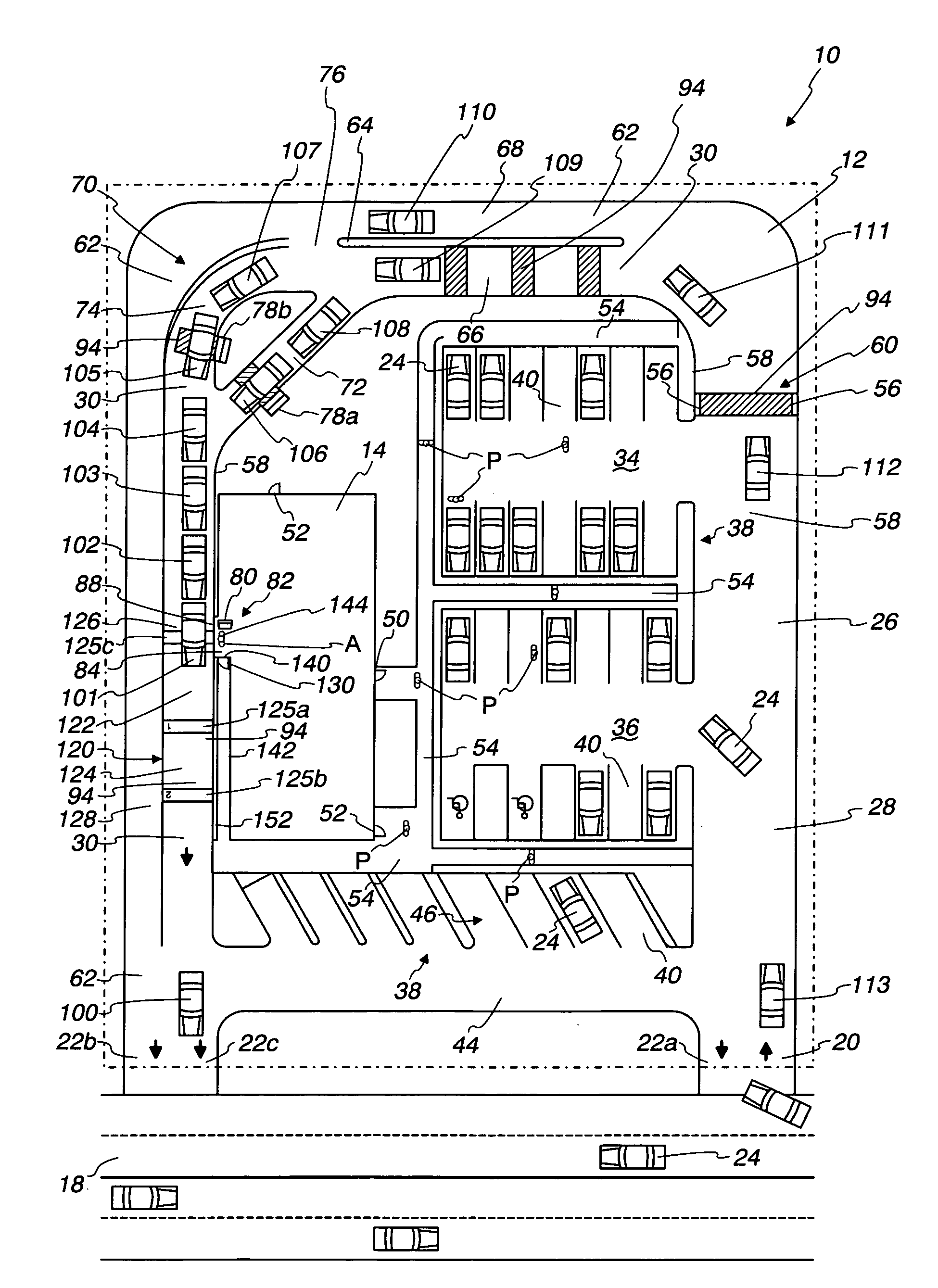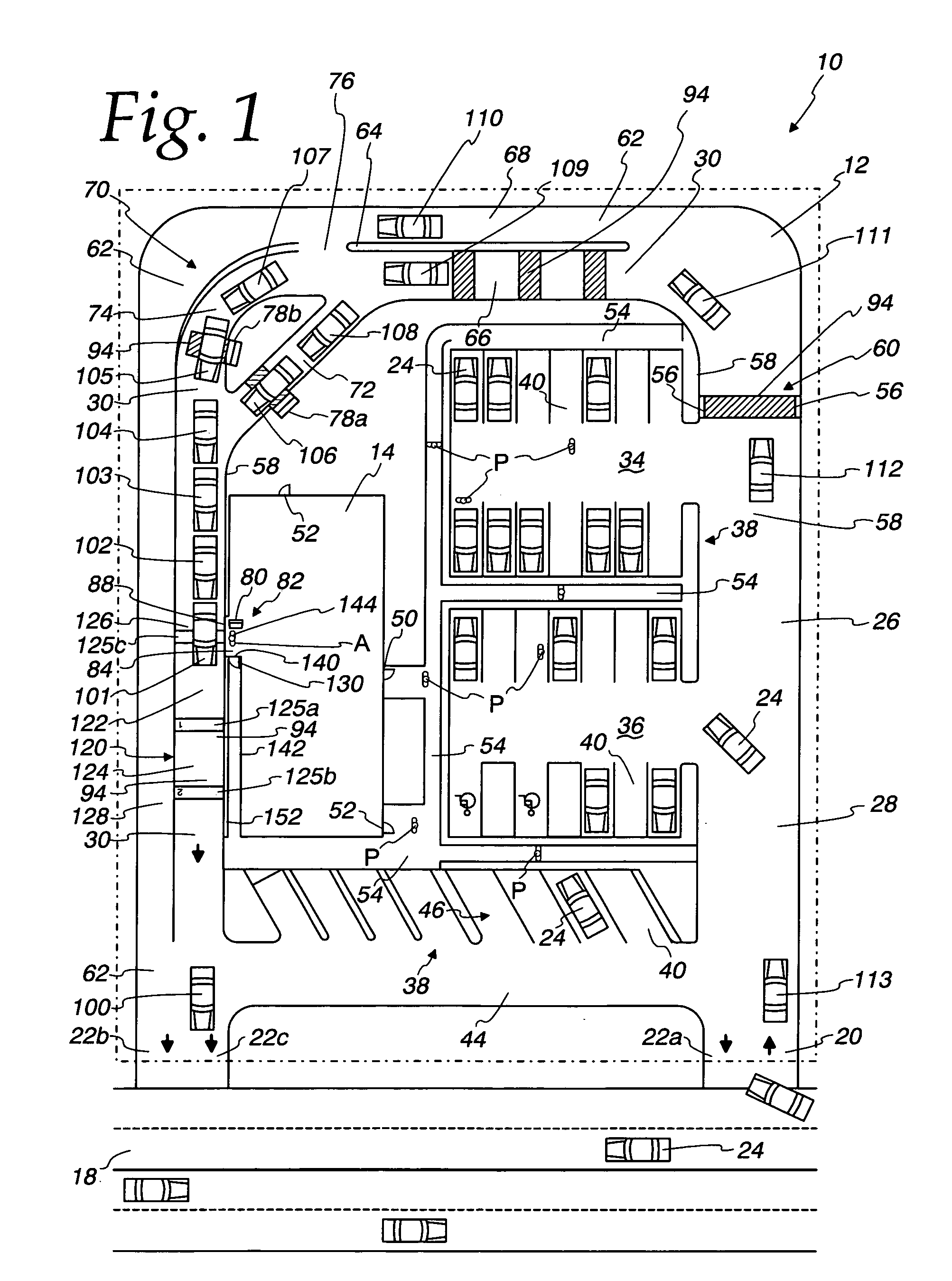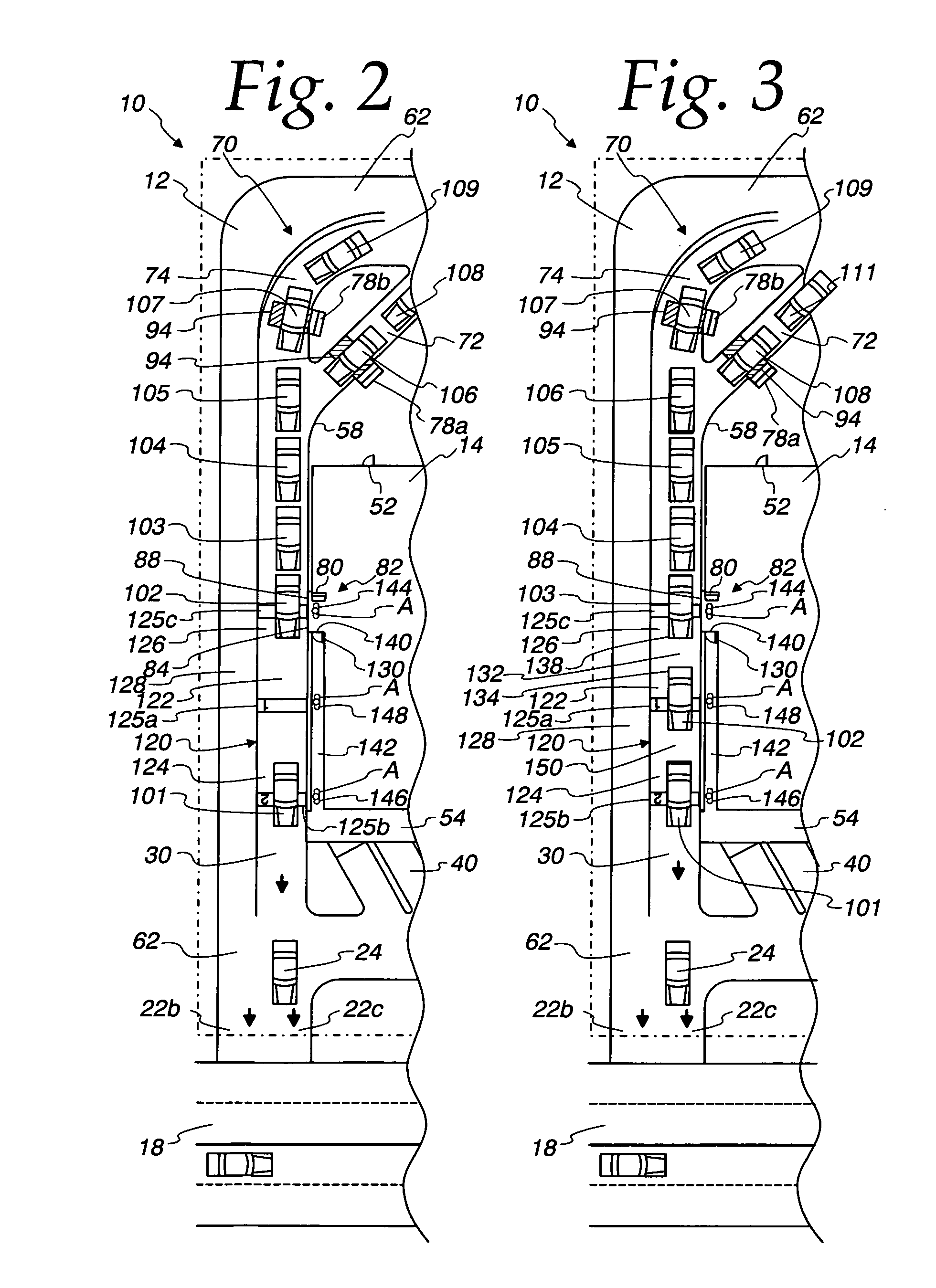Drive-thru system and method
a technology of driving through and out, applied in the direction of traffic signals, instruments, roads, etc., can solve the problems of inability of the staff of the facility to prepare a customer's order, pick up, and hinder the continued servicing of upstream vehicles, etc., and achieve the effect of sufficient length and width
- Summary
- Abstract
- Description
- Claims
- Application Information
AI Technical Summary
Benefits of technology
Problems solved by technology
Method used
Image
Examples
second embodiment
[0069]FIG. 5 illustrates the present invention wherein in-line vehicle waiting space 122, which is the closest in-line vehicle waiting space to primary food delivery window 84, is accessible by attendant A to make a delivery of a delayed order from a secondary food delivery window 164 without walking outside. Delivery to the second, more downstream in-line vehicle waiting space 124 is made by attendant A walking outside building 14. FIG. 5 shows an attendant runway 162 that includes an inside upstream portion 170 and a downstream outside portion 160. Upstream portion 170 of attendant runway 162 is sheltered from the outside environment by outer building wall portion 156 and by a door 174 at a doorway 172 that divides inside upstream portion 170 of attendant runway 162 and outside portion 160 of attendant runway 162. Delivery of a delayed order may be made by attendant A walking along an enclosed pathway 168 in upstream portion 170 of attendant runway 162 to travel between primary fo...
third embodiment
[0074]FIG. 6 shows the present invention that is a modification of the drive-thru system shown in FIG. 5. In this embodiment drive-thru lane 30 includes a third in-line vehicle waiting space 176. Thus, the drive-thru lane illustrated in FIG. 6 has one in-line vehicle waiting space 122 that is accessible by attendant A at secondary window 164 without attendant A having to walk outdoors, and two outside in-line vehicle waiting spaces 124 and 176 that are accessed by attendant A after passing through doorway 172 to outside portion 160 of runway 162. In this modification, depending upon the length of side 182 of building 14, primary food delivery window 84 and secondary food delivery window 164 may need to be shifted towards the rear side 180 of building 14 to accommodate third in-line vehicle waiting space 176.
[0075]While not a requirement, it is preferable that primary food delivery window 84, optional secondary food delivery window 164, and in-line vehicle waiting spaces 122, 124 and...
PUM
 Login to View More
Login to View More Abstract
Description
Claims
Application Information
 Login to View More
Login to View More - R&D Engineer
- R&D Manager
- IP Professional
- Industry Leading Data Capabilities
- Powerful AI technology
- Patent DNA Extraction
Browse by: Latest US Patents, China's latest patents, Technical Efficacy Thesaurus, Application Domain, Technology Topic, Popular Technical Reports.
© 2024 PatSnap. All rights reserved.Legal|Privacy policy|Modern Slavery Act Transparency Statement|Sitemap|About US| Contact US: help@patsnap.com










